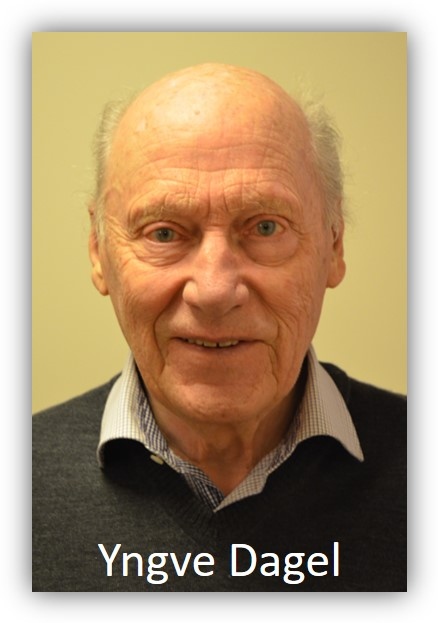News Items - International Association of Packaging Research Institutes
| IAPRI in the 1970s and ‘80s In the second of our articles celebrating IAPRI’s 50th anniversary and summarizing the association’s history, we jump back to its origins as an organization with a compact, largely European membership The growth and development of IAPRI, from its creation 50 years ago in 1971, in many ways reflects wider shifts in the world of packaging, packaging research and education. To begin with, why set up an organization of this kind in the first place? Arguably, international co-operation in other areas such as trade and safety had, throughout the 1960s, filtered down to the specifics of packaging standards, as well as the research and testing that made such standards possible. Like many complex and diverse systems, IAPRI started its evolutionary process in a very simple form. In fact, the first international symposium to attract a handful of future IAPRI founder members was held over a decade earlier in 1960, hosted by Pira in the UK. Follow-up events, including one in Copenhagen in 1970, paved the way for the formal establishment of IAPRI the following year. Rudolph Heiss of the Fraunhofer Institute (IVV) in Freising, Germany, became the first President with Frank Paine of Pira as Secretary General (SG). While Heiss was succeeded as President by Yngve Dagel of Sweden in 1976, Paine remained SG until 1992. Small, friendly settings  Ten years ago, on the occasion of IAPRI’s 40th anniversary, we spoke to Dagel. As he said then: “There were just four or five members for the first four years or so. Then it developed, mostly at first with other European institutes.” Later, more US organisations became members. “But it was a slow process.” Ten years ago, on the occasion of IAPRI’s 40th anniversary, we spoke to Dagel. As he said then: “There were just four or five members for the first four years or so. Then it developed, mostly at first with other European institutes.” Later, more US organisations became members. “But it was a slow process.”Nonetheless, it was clear from the outset that this compact membership was only the tip of a much larger iceberg. Just one year after IAPRI was formed, its first Conference attracted no fewer than 300 delegates. Meanwhile, the symposium format, exclusively for members, remained of necessity a very intimate affair, as former President Kees Sonneveld recalled. The participants in the 1984 Symposium in Vienna all fitted round a single, large table. “This was very cosy, and it highlights the fact that these were small but high-content-level gatherings,” he said. Despite the high calibre of the scientific presentations, they were far from being stuffy academic sessions, as Dagel explained. “For me, the Symposia were more engaging events, shared with people with similar interests and facing similar challenges,” he said. “We all became good friends.” During the 1970s and ‘80s – in fact, for the first 34 years of IAPRI’s existence – the membership’s independence from consumer brand-owners and suppliers of equipment and materials was vigorously maintained. “We were mostly independent research institutes, and we were serious about not allowing access to any commercial interests,” said Dagel. “Some members in particular were adamant about this. “But then, over time, the institutes themselves have become more commercial. Things have moved on.” That movement was already identifiable back at IAPRI’s 1985 Michigan State University (MSU) event, as Paine pointed out. “For the first time, it combined the Symposium and Conference, so it was fully open to different commercial bodies.” There were developments in other areas, too. By 1984, IAPRI boasted around 25 members, and by the time Dagel stepped down, to be replaced by Michel Veaux as President in 1992, that number had risen to 42, representing 27 different countries. An evolving landscape Further changes began to take place in the mid-1980s, notably the formation of Working Groups (WGs) in areas of special interest. The first of these was the Dangerous Goods WG. The Packaging and the Environment (later Sustainable Packaging) WG was created in 1991, and others followed. More generally, the research concerns of IAPRI members expanded to cover a wider range, as Paine explained when we spoke to him in 2011. For a long time, the main focus was on unit packs for transit. “Most people reached the stage where they’d got the unit pack right, but they needed to put more effort into equipment and primary packaging,” he said. “More work started to be done on wider packaging systems.” Some challenges appear as difficult to grapple with today as they did back in the 1970s. “For example, early on, we started looking at lifecycle analysis (LCA),” said Dagel. “But LCA studies turned out to be a very complex and difficult methodology to establish. I think those challenges have still not been resolved.” Some might say that even today, a decade on, they remain largely unresolved. Two further areas of evolutionary interest merit at least a mention. The first of these is the relationship between IAPRI and the Wiley professional journal Packaging Technology and Science (PTS). When the publication was established in 1988, IAPRI members were among its most ardent champions. It is no coincidence that Paine, as well as being SG of IAPRI, was the journal’s first editor. Secondly, IAPRI has consistently put its weight behind support for packaging education, just as much as for research. “When I started in packaging back in 1954, packaging science wasn’t on the university agenda at all,” Dagel told us. “People would have laughed at the idea. Things began to change, but it took a good while for it to be treated as a serious subject.” To see how much has changed, it is enough to count up just how many university packaging schools and departments are among current IAPRI members. In the last of our three anniversary reports later in the year, we will look at IAPRI’s growth and geographical spread since the Millennium. Published: 06/29/21 |